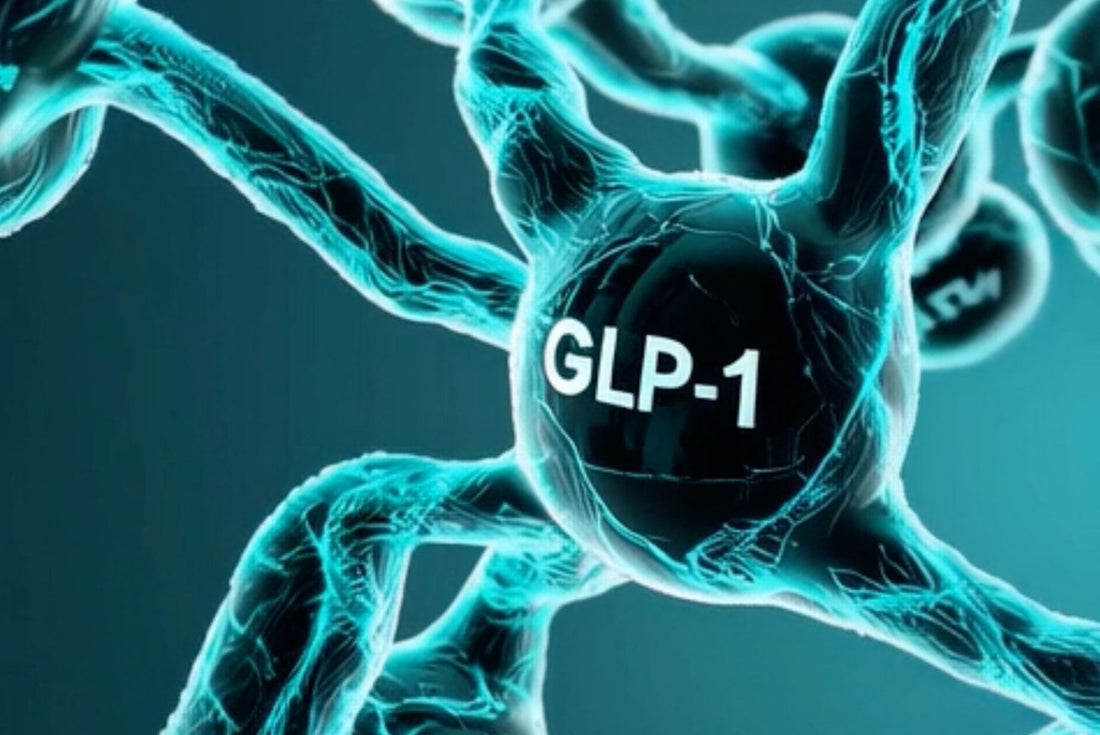
Natural GLP-1: Your Body's Own Weight Control
You've probably heard the buzz about weight loss medications like Ozempic and Wegovy. But did you know your body already produces its own version of these powerful compounds? Let's dive into the fascinating world of GLP-1 – your body's natural appetite manager.
What Exactly Is GLP-1?
Think of GLP-1 as your body's built-in "I'm full" messenger. This hormone, made up of 30-31 amino acids, springs into action whenever you eat. Special cells in your intestines (called L-cells) and certain brain neurons release it like a dinner bell in reverse – instead of calling you to eat, it tells you when to stop.
Here's what this tiny powerhouse does for you:
- Manages your blood sugar by telling your pancreas to release insulin when needed
- Keeps blood sugar stable by blocking glucagon, the hormone that would otherwise spike your levels
- Makes you feel fuller longer by slowing down how quickly food leaves your stomach
- Tells your brain "that's enough!" by signaling the hypothalamus that you're satisfied
The catch? Your body breaks down natural GLP-1 incredibly fast – we're talking minutes, not hours. It's like having a brilliant assistant who only works for two minutes at a time.
How Natural GLP-1 Helps You Lose Weight
Let's break down the four main ways your body's GLP-1 supports weight loss:
1. The Appetite Tamer
Remember that satisfied feeling after a good meal? That's partly GLP-1 at work. It creates a communication highway between your gut and brain, naturally reducing hunger and helping you feel content with smaller portions. No willpower battles required – your body just feels genuinely satisfied.
2. The Slow-Down Effect
By keeping food in your stomach a bit longer, GLP-1 extends that pleasant full feeling. It's like having a natural portion control system that works from the inside out.
3. The Calorie Burner (Yes, Really!)
Here's something cool: animal studies suggest GLP-1 might activate brown fat tissue – the "good" fat that burns calories to keep you warm. While this effect is modest, every little bit helps!
4. The Smart Choice Maker
When your GLP-1 levels are optimal after meals, you're more likely to make better food choices throughout the day. Better blood sugar control means fewer cravings and more stable energy – it's a positive cycle that builds on itself.
What Science Is Telling Us Now
Recent research has uncovered some exciting connections:
Your Gut Bacteria Are Key Players: A 2024 study revealed that when your gut bacteria ferment fiber, they produce compounds that stimulate GLP-1 release. It's like having a microscopic support team working for your weight loss goals.
Yerba Maté Might Help: If you're a tea lover, here's good news – a 2025 study found that yerba maté boosted GLP-1 in mice, reducing their appetite naturally. While it's not as dramatic as medications, it's a gentle nudge in the right direction.
Why Gastric Bypass Works So Well: People who've had gastric bypass surgery show GLP-1 levels about 3.5 times higher than normal after meals. This helps explain why the surgery often leads to lasting weight loss – it's not just about stomach size.
The Medication Connection: Those famous weight loss drugs? They're essentially mimicking what your body already does, just with a much longer-lasting effect. Where natural GLP-1 works for minutes, medications can work for days.
Natural Ways to Boost Your GLP-1
Ready to give your body's GLP-1 production a natural boost? Here's your practical playbook:
Fill Up on Fiber
Load your plate with whole grains, beans, lentils, fruits, and vegetables. Your gut bacteria will thank you by producing more GLP-1-stimulating compounds.
Feed Your Gut Friends
Include probiotic foods like yogurt, kefir, and fermented vegetables. Look for Bifidobacterium and Lactobacillus strains – they're particularly good at supporting GLP-1 production.
Choose Smart Fats
Olive oil, nuts, and avocados aren't just delicious – they provide nutrients that help trigger GLP-1 release. Plus, tryptophan-rich foods like turkey can contribute to the process.
Spice Things Up
Emerging research suggests that berberine, cinnamon, and curcumin might help stimulate GLP-1. Consider adding these to your cooking or supplement routine (after checking with your healthcare provider, of course).
The Reality Check
Here's the honest truth: boosting your natural GLP-1 through lifestyle changes won't give you the dramatic 15% weight loss seen with medications. But what it will do is support gradual, sustainable weight management without side effects.
Think of it this way:
- Natural GLP-1 is like a gentle current guiding you downstream
- Medications are like a speedboat
- Both can get you where you want to go – just at different speeds
Your Personal Action Plan
Boosting natural GLP-1 isn't about perfection – it's about progress. Start with one or two changes:
- Add an extra serving of vegetables to your dinner
- Swap your afternoon snack for some nuts or Greek yogurt
- Try a cup of yerba maté or green tea
- Experiment with adding cinnamon to your morning oatmeal
Remember, your body already knows how to produce this powerful hormone. You're just giving it the tools to do its job better.
The Bottom Line
Natural GLP-1 is your body's sophisticated weight management system, working quietly behind the scenes every time you eat. While it may not offer the dramatic results of prescription medications, supporting your natural GLP-1 through smart food choices and lifestyle habits is a safe, sustainable approach to weight management.
The best part? You can start today, with your very next meal. Your body is ready – are you?
Want help creating a GLP-1-boosting meal plan that fits your lifestyle? Or curious about which supplements might support your goals? Let's talk about making this work for you.









